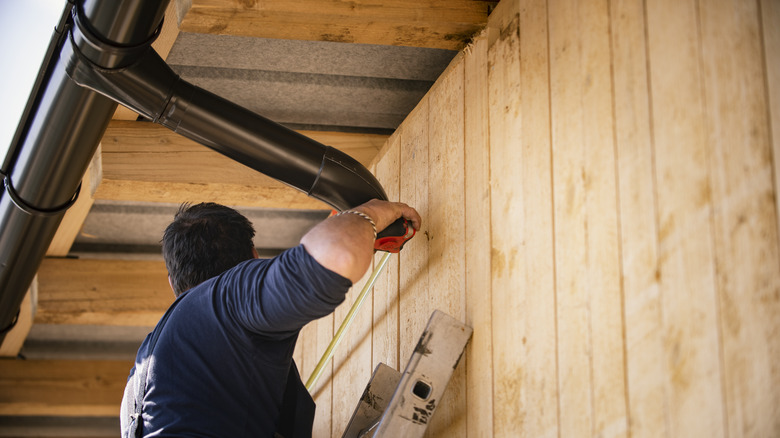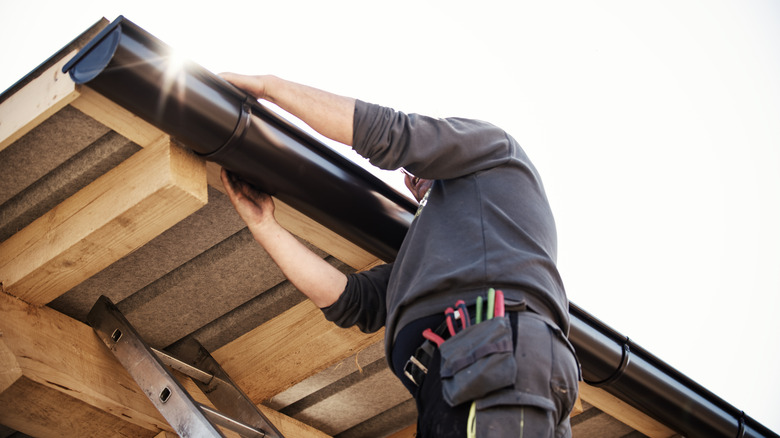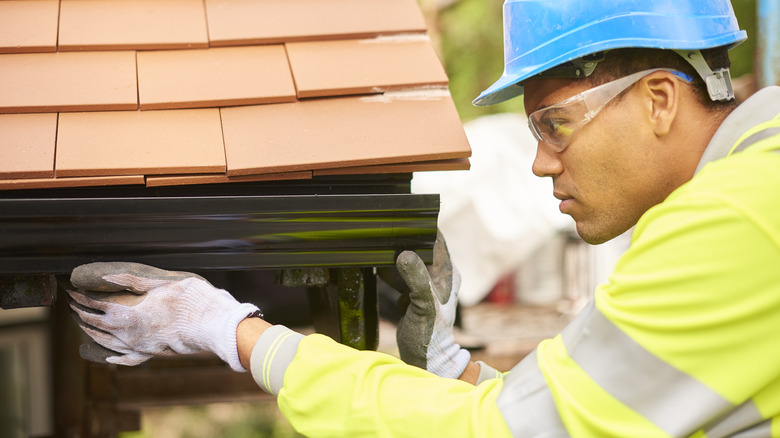Can You DIY A Gutter Installation Or Should You Hire A Professional?
Gutters are an important part of your home. They carry heavy rainwater down your roof and away from the foundation, preventing moisture damage. Even a few inches of rain create thousands of gallons of water, and each gallon weighs more than 8 pounds. That's a lot of weight pouring off the top of your house. Gutter installation is designed so downspouts can withstand this weight. They must also drain in the right direction, and far enough away from the house to avoid added pressure on the foundation as wet soil expands. This leads to a common question: Do you need a gutter professional, or can you DIY the project?
There are pros and cons to both professional and DIY installations. On the professional side, you gain the experience and skills of trained experts, but you pay more than you might to do it yourself. On the DIY side of this project, you save money on the cost of labor but run the risk of improper installation. Making an informed decision on home renovations is easier with all the facts. Here, you'll learn more about hiring a pro and attempting the gutter application yourself.
Taking gutters into your own hands with a DIY installation
Is gutter installation something you could safely tackle as a DIY project? There are many factors to consider as you make this decision, including what tools you have on hand, how comfortable you feel with heights (climbing a ladder), and how much you know about your rain gutter system.
Gutter installation requires equipment, such as a tape measure, ladder, hack saw, level, cordless drill, hole saw (2.5 inches), caulking gun, tin snips, gutter sealant, and more. Tools can be purchased or rented as needed. You'll also need the supplies to create the drainage system, including gutter channels, downspouts, end caps, elbows, hangers, miters, downspout brackets, and gutter spikes. These parts are available in most home hardware stores.
Even with all the right equipment, you should do some research before attempting the installation. For example, gutters should be installed to slope a minimum of 1/16 inch for every foot to ensure water runs toward the downpipes, and downspouts should end 5 feet from your home's foundation. There are also alternative drainage methods to consider, including underground catchments or a garden rain barrel. If any of this seems overwhelming, it might be best to consider a professional gutter service.
Calling in the gutter experts
The biggest disadvantage of hiring a professional–over attempting a DIY renovation–is cost. Gutter repair or installation costs between approximately $624 and $1,708, and prices go up as the size of the home or the value of materials increases. Despite the extra cost of labor, there are several benefits to calling in the experts.
Gutter installation professionals are trained in all the details outlined above. They know the correct distance for the downspout to end above ground or in an underground catchment system. They also have the necessary tools, gutter materials, and protective gear, including security harnesses, safety eyewear, hard hats, gloves, and steel-toed boots.
Professionals can also help choose the right type of gutters based on style preferences. They have access to a range of products not found at the local hardware store, including gutter materials like vinyl, galvanized steel, wood, aluminum, copper, and zinc. Hiring an experienced gutter fitter also means you won't overorder materials. The team measures your home to determine the right length of gutters and downspouts before installation. If you don't mind spending a little more for the additional advantages, hiring professionals might be the best option for you.


